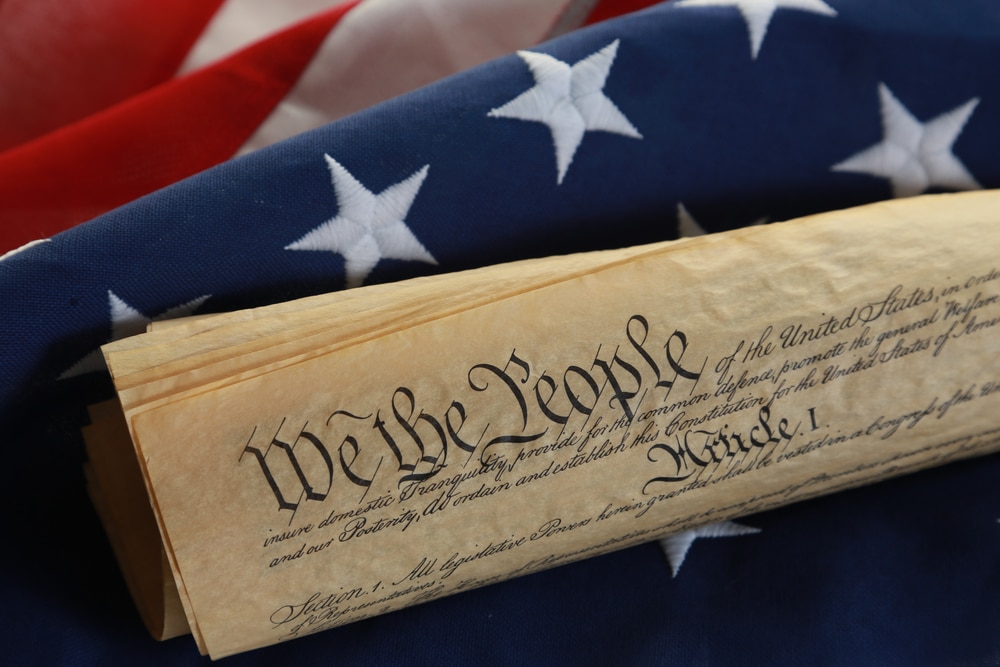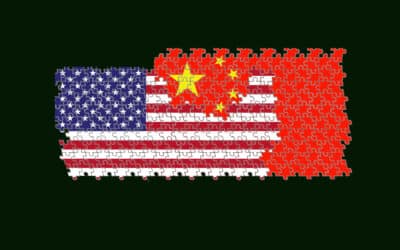If I were to describe Joe Biden as a hypocrite, I rather doubt anyone reading would be shocked.
But if you spend any time on Twitter you’ve surely seen a clip of Biden warning that Trump may start a war with Iran, and that of course he would need congressional approval before initiating hostilities.
You know how this works: now that Biden is calling the shots, all those niceties about congressional approval have gone out the window.
However, you can always count on neoconservatives and other confused people to defend the president at a time like this.
Years ago I had a public exchange with author Mark Levin about the subject of presidential war powers. Levin was pretty darn good on Covid and is sound on a good many other things, but on this he’s dreadful. He was defending Barack Obama, who had sent troops to Libya without congressional approval, and I was opposing Obama.
All these people—Lindsey Graham and Joe Biden alike, along with the odd right-wing radio host here and there — are dead wrong.
I’ve written about this in numerous places and at much greater length, but here’s in a nutshell what you should know.
Ever since the Korean War, Article II, Section II of the Constitution—which refers to the president as the “Commander in Chief of the Army and Navy of the United States”—has been interpreted to mean that the president has the power to initiate hostilities without congressional approval.
But what the Framers meant by that clause was that once war has been declared, it was the president’s responsibility as commander-in-chief to direct the war. Alexander Hamilton said that the president, although lacking the power to declare war, would have “the direction of war when authorized or begun.”
The president acting alone was authorized only to repel sudden attacks (hence the decision to withhold from him only the power to “declare” war, not to “make” war, which was thought to be a necessary emergency power in case of foreign attack).
The Framers assigned to Congress what David Gray Adler has called “senior status in a partnership with the president for the purpose of conducting foreign policy.” Congress possesses the power “to regulate Commerce with foreign Nations,” “to raise and support Armies,” to “grant Letters of Marque and Reprisal,” to “provide for the common Defense,” and even “to declare War.” Congress shares with the president the power to make treaties and to appoint ambassadors.
As for the president himself, he is assigned only two powers relating to foreign affairs: he is commander-in-chief of the armed forces, and he has the power to receive ambassadors.
At the Philadelphia convention, the delegates expressly disclaimed any intention to model the American executive exactly after the British monarchy. James Wilson, for example, remarked that the powers of the British king did not constitute “a proper guide in defining the executive powers. Some of these prerogatives were of a Legislative nature. Among others that of war & peace.” Edmund Randolph likewise contended that the delegates had “no motive to be governed by the British Government as our prototype.”
To repose such foreign-policy authority in the legislative rather than the executive branch of government was a deliberate and dramatic break with the British model of government with which they were most familiar, as well as with that of other nations, where the executive branch (in effect, the monarch) possessed all such rights, including the exclusive right to declare war.
The Framers of the Constitution believed that history testified to the executive’s penchant for war. Quotations to this effect are abundant and I won’t share them here.
At the Philadelphia convention, Pierce Butler was for “vesting the power in the President, who will have all the requisite qualities, and will not make war but when the nation will support it.” Butler’s motion did not receive so much as a second.
James Wilson assured the Pennsylvania ratifying convention, “This system will not hurry us into war; it is calculated to guard against it. It will not be in the power of a single man, or a single body of men, to involve us in such distress; for the important power of declaring war is vested in the legislature at large: this declaration must be made with the concurrence of the House of Representatives: from this circumstance we may draw a certain conclusion that nothing but our interest can draw us into war.”
In Federalist #69, Alexander Hamilton explained that the president’s authority “would be nominally the same with that of the King of Great Britain, but in substance much inferior to it. It would amount to nothing more than the supreme command and direction of the military and naval forces, as first general and admiral of the confederacy; while that of the British king extends to the declaring of war, and to the raising and regulating of fleets and armies; all which by the constitution under consideration would appertain to the Legislature.”
So it’s unsurprising that George Washington’s operations on his own authority against the Indians were confined to defensive measures, conscious as he was that the approval of Congress would be necessary for anything further. “The Constitution vests the power of declaring war with Congress,” he said, “therefore no offensive expedition of importance can be undertaken until after they have deliberated upon the subject, and authorized such a measure.”
The Quasi War with France and Thomas Jefferson’s action against the Barbary pirates do not refute this argument. John Adams complied with congressional statues in the actions he took, as did Jefferson, who deferred to Congress throughout the Barbary episode.
You will hear it said that president have sent men into battle “hundreds of times” without congressional authorization. This argument, like so much propaganda, originated with the U.S. government itself. At the time of the Korean War, a number of congressmen contended that “history will show that on more than 100 occasions in the life of this Republic the President as Commander in Chief has ordered the fleet or the troops to do certain things which involved the risk of war” without the consent of Congress.
In 1966, in defense of the Vietnam War, the State Department adopted a similar line: “Since the Constitution was adopted there have been at least 125 instances in which the President has ordered the armed forces to take action or maintain positions abroad without obtaining prior congressional authorization, starting with the ‘undeclared war’ with France (1798-1800).”
These claims, in turn, morphed into the “hundreds of times” that we’ve heard so often.
This lengthy list of alleged precedents consisted, according to Edward S. Corwin (an excellent legal scholar), mainly of “fights with pirates, landings of small naval contingents on barbarous or semi-barbarous coasts, the dispatch of small bodies of troops to chase bandits or cattle rustlers across the Mexican border, and the like.”
To support their position, therefore, neoconservatives and their left-liberal clones are counting chases of cattle rustlers as examples of presidential warmaking, and as precedents for sending millions of Americans into war with foreign governments on the other side of the globe.
Plenty more can be said on the topic, but what I’ve shared with you here will suffice for 90 percent of all conversations you might find yourself in about it.
In my old professor days, I used to tell students on day one: a very good reason to know American history is that if you don’t know it, shysters will try to put one over on you.
I’m doing my best for you against the shysters of our day.
This article was originally featured as a Tom Woods Newsletter and is republished with permission.































